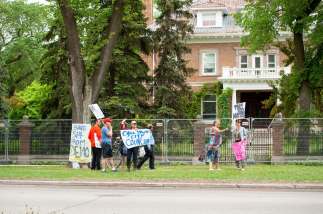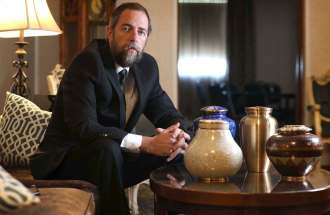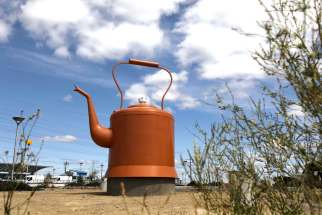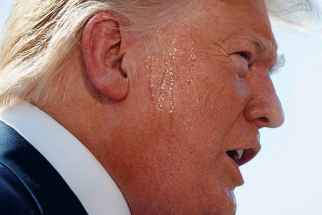Low voter turnout is Pallister’s best defence
Read this article for free:
or
Already have an account? Log in here »
To continue reading, please subscribe:
Monthly Digital Subscription
$0 for the first 4 weeks*
- Enjoy unlimited reading on winnipegfreepress.com
- Read the E-Edition, our digital replica newspaper
- Access News Break, our award-winning app
- Play interactive puzzles
*No charge for 4 weeks then price increases to the regular rate of $19.00 plus GST every four weeks. Offer available to new and qualified returning subscribers only. Cancel any time.
Monthly Digital Subscription
$4.75/week*
- Enjoy unlimited reading on winnipegfreepress.com
- Read the E-Edition, our digital replica newspaper
- Access News Break, our award-winning app
- Play interactive puzzles
*Billed as $19 plus GST every four weeks. Cancel any time.
To continue reading, please subscribe:
Add Free Press access to your Brandon Sun subscription for only an additional
$1 for the first 4 weeks*
*Your next subscription payment will increase by $1.00 and you will be charged $16.99 plus GST for four weeks. After four weeks, your payment will increase to $23.99 plus GST every four weeks.
Read unlimited articles for free today:
or
Already have an account? Log in here »
Hey there, time traveller!
This article was published 09/08/2019 (2317 days ago), so information in it may no longer be current.
It we’re being honest, there are few mysteries surrounded the upcoming provincial election. Based on all available information, it appears that the Progressive Conservatives will again form government when the votes are counted on September 10. But beyond that, it’s hard to find much intrigue.
Except for one small but important issue: how many Manitobans will show up to vote?
Voter turnout has become one of the biggest concerns in modern democracy. Increasingly, western democracies including Canada have been unable to prompt higher numbers of voters to participate in elections. The result is that smaller and smaller numbers of motivated voters have been taking on greater and greater influence in determining who gets to govern.
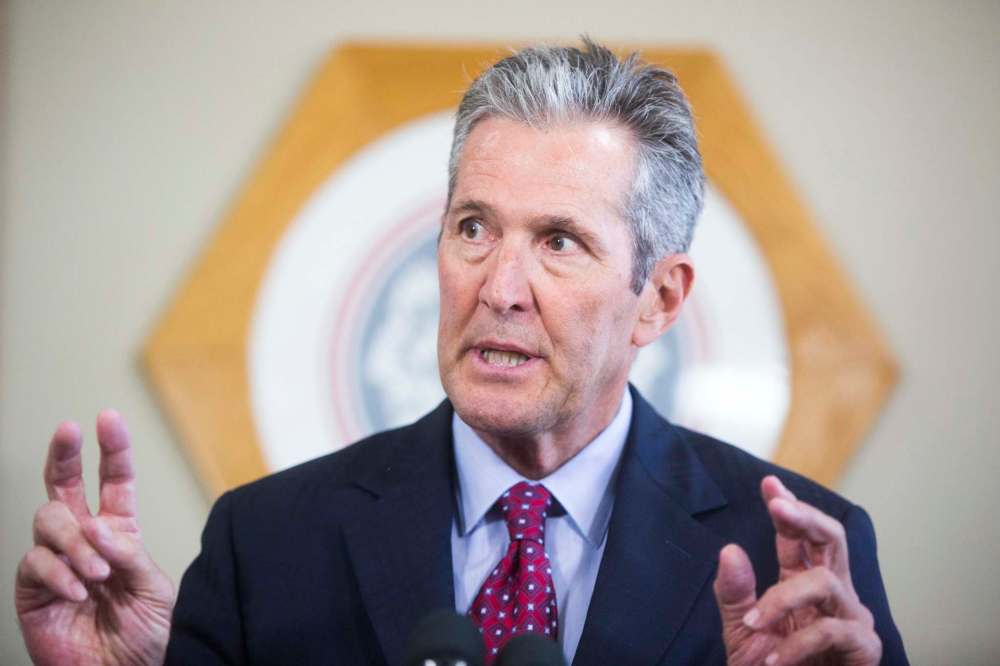
In the case of this upcoming Manitoba election — expected to start officially as early as Monday — voter turnout will largely determine what kind of mandate Premier Brian Pallister and his Tories receive.
In 2016, Pallister won the largest majority in Manitoba history, capturing 40 seats in the 57-seat legislature. More impressively, the Tories garnered the support of 53 per cent of the total votes cast, one of the most dominant performances ever by a party in a Manitoba election.
This time around, it’s widely expected the Tories will lose seats. The NDP were deeply wounded going into the last election, and voters had already decided there was going to be a change before the campaign started. Pallister delivered in a campaign that he really could not lose.
This time around, the challenge for Pallister is much different. And voter turnout will play a major role in determining the premier’s ultimate fate.
Although the NDP are still regrouping, they will be more competitive, particularly in Winnipeg. Voter interest has also been piqued by the Green Party, and the Liberals will have something to say in the capital region.
First, the glass-half-empty view for the Tories. Although the NDP are still regrouping, they will be more competitive, particularly in Winnipeg. Voter interest has also been piqued by the Green Party, and the Liberals will have something to say in the capital region. If — and it’s a big “if” — there is a surge in turnout, the Tories will be hard pressed to hold all of their seats. Extending their majority will be virtually impossible.
In the glass-half-full view, it’s hard to imagine a surge in voters in this election.
In 2016, a significant desire by voters to rid themselves of the NDP after 17 years of governing, there was no uptick in turnout. In fact, 2,000 fewer Manitobans cast votes in 2016 than they did in 2011.
It’s hard to see more people coming out to vote in this election, where the Tories have a comfortable lead in province-wide polling and opposition parties are still struggling to find the resources and the issues on which to seriously compete to form government.
What could change that trend? Traditionally, turnout goes up when voters really want a change in government, or when there is a new leader with an exciting brand. In those elections where the result is not really in doubt — like this election — voters on all sides generally remain on the sidelines.
The lowest voter turnout in recent memory was the infamous 2003 campaign which saw Premier Gary Doer’s NDP seek its second term against a poorly resourced Tory side and a barely functioning Liberal Party. Doer and the NDP were so popular, the result seemed pre-ordained. When it was over, only 390,000 people cast a vote, which was 100,000 fewer than in 1999. It drove turnout to just 54 per cent, the lowest ever in Manitoba.
It should be noted that low turnout is an incumbent government’s best line of defence. In general, low turnout elections are the symptom of an ambivalent electorate that feel no urgency to support or defeat any particular party. So, rather than being forced to make a decision, they stay home.
The bigger concern — in Manitoba and across the country — is whether the trend toward lower turnout can ever be reversed. Manitoba is, in this regard, no different than other provinces, and the overall numbers are worrisome.
Manitoba’s population has grown steadily over the last 20 years, from about 1.1 million people to just over 1.3 million today. Despite population growth, the sheer number of people voting has actually gone down.
Manitoba’s population has grown steadily over the last 20 years, from about 1.1 million people to just over 1.3 million today. Despite population growth, the sheer number of people voting has actually gone down.
The most votes ever cast was in the 1988 Manitoba election, when 537,000 citizens turned out as former Premier Gary Filmon unseated the NDP. It is one of only two elections in this province’s history where more than half a million people cast votes; in 1995, 504,000 votes were cast as Filmon won his second majority.
Since then, turnout has plummeted. The best turnout in the last 20 years was 1999, when 488,000 Manitobans showed up to vote in an election that put an end to Filmon’s dynasty. Since then, a combination of apathy and uncompetitive campaigns have failed to encourage a surge in voting.
Pallister’s record majority in 2016 is perhaps the best example of this long-term trend. The 418,000 votes cast in the last election was the lowest since 1969, when 334,000 people voted and helped NDP Premier Ed Schreyer defeat Tory Walter Weir. That is a span of 50 years.
It is hard to argue with a committed non-voter. They believe there are no parties or politicians worthy of their support. They find their values and priorities are not reflected by any elected officials. Low turnout, in and of itself, cannot motivate them to cast a ballot.
And yet, the only thing that is certain about any election is that someone will win and form government. If that doesn’t ultimately motivate you to vote, nothing will.
dan.lett@freepress.mb.ca

Born and raised in and around Toronto, Dan Lett came to Winnipeg in 1986, less than a year out of journalism school with a lifelong dream to be a newspaper reporter.
Our newsroom depends on a growing audience of readers to power our journalism. If you are not a paid reader, please consider becoming a subscriber.
Our newsroom depends on its audience of readers to power our journalism. Thank you for your support.

